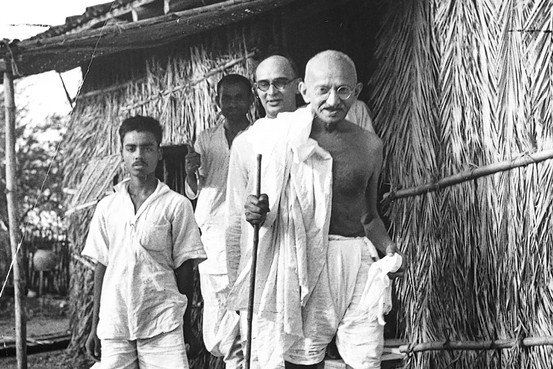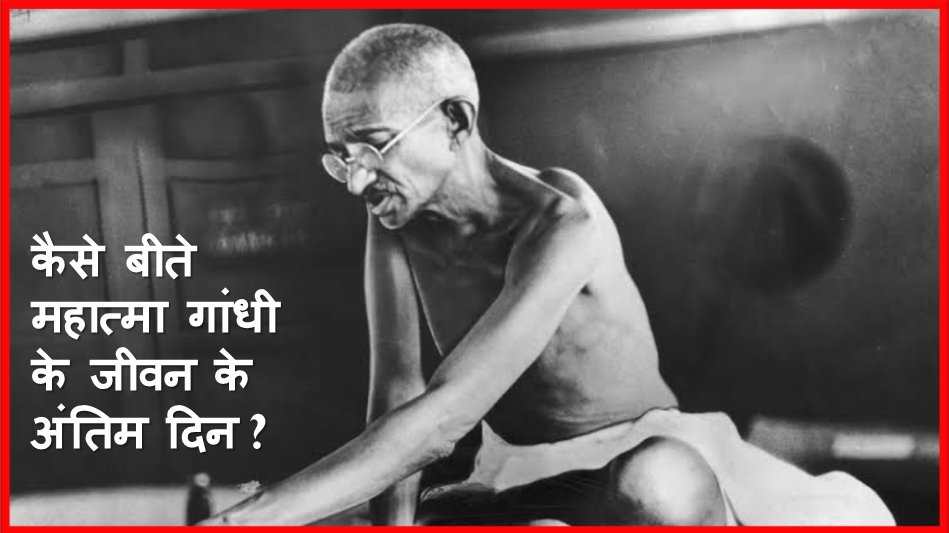GANDHI AND HIS CASTE
The recent controversy revolving around M.K. Gandhi which involved labelling him a ‘chatur Baniya’ has attracted people’s attention. The left and the right alike have condemned Gandhi’s life and thought but his legacy beyond rebuke and ridicule.
Mark Johnson is a London -based journalist.
A Vaishnava Bania by birth, he is by nature a Brahmin, the teacher of his fellow-men, not by the preaching of virtue, but by its practice; by impulse a Kshatriya, in his chivalrous defence of those who had placed their trust in him and look to him for protection; by choice a Sudra, servant of the humblest and most despised of his fellow-men. It is said of [the seer] Ramkrishna that he once swept out the foul hut of a pariah with his own hair, to prove his freedom from arrogance towards and contempt for the untouchable outcast. The twice-born Prime Minister’s son [Gandhi] has been seen with his own hands to purify the sanitary convenience of his own house and of the gaols in which he has been interned.
-Polack, Gandhi’s friend and associate

This question seems to be in fashion these days as newspapers, magazines and online forums are again and again trying to sensationalise the issue and generate public opinion on the Mahatma’s relation with the much debated and condemned Indian caste system. After an allegation that much in synchrony with his ascribed status as a Baniya, Gandhi was naturally a manipulator, a strategist who pre-planned and measured each and every move.
This is in a way synonymous to saying that he was a clever, selfish, manipulative and even Machiavellian politician. This allegation points at two issues that we must reflect upon, the first is that in a traditional, caste bound society like India on one hand we are openly accepting the encroachment of the west in terms of its techno-science, pop culture, idea of growth and development etc. yet on the other at a deep psychological level we are still very much tied to our inscriptive, hierarchical, discriminatory feudal mentalities.
Thus while we sit in air conditioned living rooms with modern facilities we can spend entire afternoons watching melodramatic saas-bahu feuds, we study abroad, purchase modern goods and gadgets and spend our weekends at modern bars and restaurants but we also take dowries, believe in rituals and dogmas, moreover it is not difficult to see that as a nation we are a strange historic juncture. On the one hand we are enamoured by the promise of smart cities and high living yet on the other we still discriminate, hierarchize and exploit fellow human beings, we accept techno-market based influences so readily but continue to hold on to our medieval mind-sets in everyday life. Thus when we ask a question as insignificant and as trivial as whether Gandhi was a Baniya or not we only display the underdevelopment of our own consciousness. A man like Gandhi gave his entire life to live with the ordinary men and women of the country irrespective of their caste, class or religion walking hand in hand with them in every pain and agony. He weaved his own cloth, he fed his goats, he cleaned the bathroom filth, he served the ailing and deceased, he walked for days in protest and he fasted for weeks in peace for the liberation of his country and its people. He was unlike a modern political leader who would occasionally step out to meet the masses and interact with them rather Gandhi was a leader who ate, drank, laughed, cried and even died among the masses in their arms. The historic life of Gandhi is enough to speak of the fact that he was not bothered by his caste; its existence was insignificance to him.
He crossed the boundaries of the country to go to England and this was against the caste rules, when in England he freely lived and dined with his Christian and Jew friends which again was a caste taboo, in Johannesburg Gandhi and his companion Polack fought against both casteism and racism, In the satyagrahas he led in South Africa, Gandhi’s closest associates were a Parsi named Rustomji, a Muslim named Kacchalia, and a Tamil named Naidoo, in his Satyagraha Ashram in Ahemedabad were inmates from the untouchable castes and throughout his life he attacked the caste system and worked towards its abolishment.
These and any associated facts can be understood if one turns the pages of history and tries to understand the phenomenon called Gandhi. The popular propaganda machine dislikes any serious engagements or debates, it dislikes it when people take on the responsibility of self-enlightenment and it is uncomfortable with the idea of awakened mass consciousness.
Moreover today politics has changed into a game of perpetual blaming and buck passing and Gandhi has once again fallen victim to it. It is therefore not surprising that we continue to associate a man like Gandhi with his caste even when he lived his entire life transcending it through his actions and life philosophy. Gandhi would have tossed and turned in his grave if he saw where his country is today!
The New Leam has no external source of funding. For retaining its uniqueness, its high quality, its distinctive philosophy we wish to reduce the degree of dependence on corporate funding. We believe that if individuals like you come forward and SUPPORT THIS ENDEAVOR can make the magazine self-reliant in a very innovative way.











